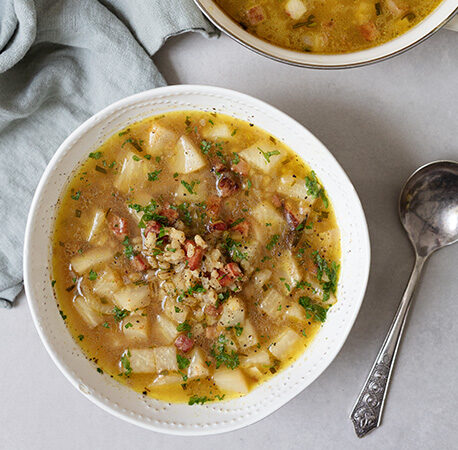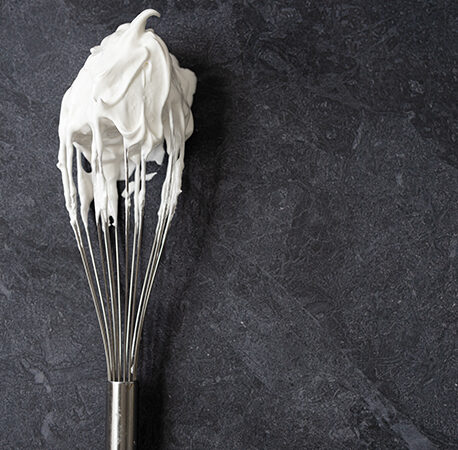- Gas vs. charcoal?
The old debate over which method is “better” involves multiple variables, from flavour to cost to convenience. From a taste perspective, many people prefer the smokier, richer taste of food cooked on a charcoal grill. Just make sure your barbecue has a lid — this helps trap in flavour, heat and smokiness. - Hot, hot, hot!
Preheat your barbecue for 15-25 minutes before you start cooking to make sure it reaches the right temperature (and to kill any lingering bacteria). Your grill should be 200-230°C for high, 180-200°C for medium-high, 150-180°C for medium and 120-150°C for low heat. A properly heated barbecue sears foods on contact, keeps their insides moist and helps prevent foods from sticking to the grates.
3. Brush it off
It’s easier to remove debris when the grates are hot, so after preheating, use a long- handled wire grill brush on the rack to clean off charred debris from prior meals. Scrape again immediately after use.
4. Safety first
Avoid cross-contamination by using separate cutting boards, utensils and platters for raw and cooked foods; refrigerate foods while marinating; and never baste with the marinating liquid.
5. Marinating is a must!
Barbecuing food will lock in a rich, smokey flavour, but the first step is to give meats, fish or vegetables a head start with a nice marinade. This will make sure the smokiness from the barbecue isn’t the only flavour coming through.
6. Find the hot spots
Cooking over a direct flame on a barbecue is perfect for quick-cooking foods like chicken fillets, fish and thin steaks. Just make sure, though, that the food doesn’t burn before it has a chance to cook through. A good method is to start food off over a direct heat to lock in flavour, then move it to a cooler part of the barbecue (over an indirect heat, or an area where there are no flames) to finish cooking.
7. Check when it’s done
The best way to know if protein is fully cooked is to check its internal temperature with an instant-read thermometer.
8. The hand test
To gauge the temperature of a grill without a thermometer, place your open palm about 12cm above the rack; the fire is high if you have to move your hand in two seconds, medium if you have to move your hand in five seconds and low if you can keep in there for 10 seconds.
9. Tame the flames
Flare-ups happen when fat drips onto the heat source and catches fire. This causes carcinogenic PAHs (polycyclic aromatic hydrocarbons) to form and accumulate on your food. To reduce flare-ups, make sure your barbecue is properly preheated to burn off any residual debris. You can trim any excess fat from meats and make sure not to over- oil your food. Always keep a squirt bottle of water near the grill to quickly douse any unexpected flare-ups.
10. Give it a rest
Let finished meats rest on a clean platter, tented with foil, for about 10 minutes before carving so juices can redistribute evenly.
- summer events
- small business
- gut health
- OATLY
- healthy
- Crudo
- top tips
- All Together Now
- fridge cake
- Events Waterford
- me auld flower
- Events Ireland
- food festival
- news
- dublin
- events Dublin
- dublin festival
- Home-Cooking
- food and drink festival
- online cooking course
- festival line-up
- cooking
- Summer festival
- eco-friendly
- Events
- cosy
- Festivals Ireland
- wine
- Body & Soul
- grapes
- music festival
- south africa






You have to be signed in to comment this post.